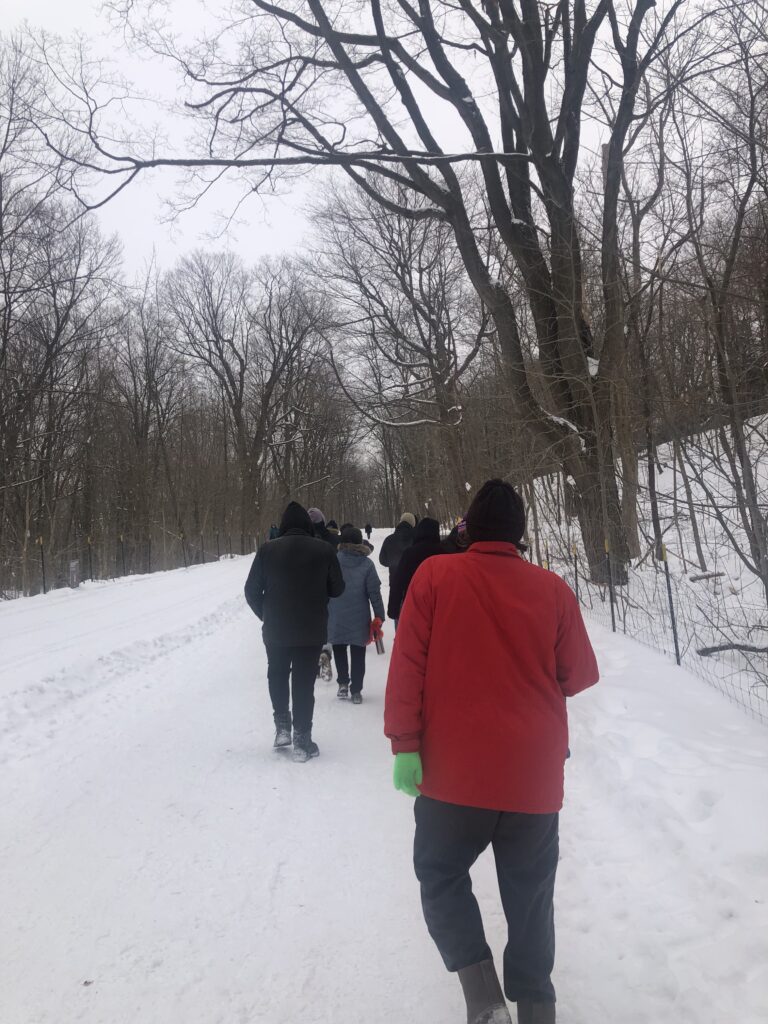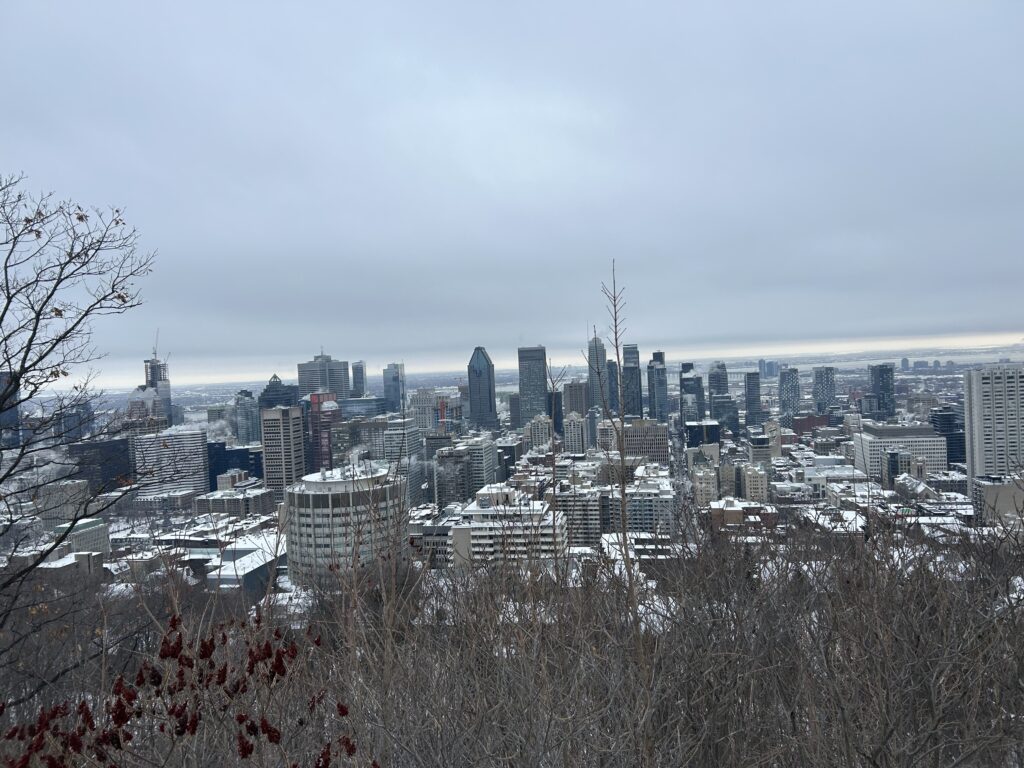It was a crisp Montreal morning when we departed EVO and headed for Mont Royal. All of the Champlain students in the Spring 2024 cohort seemed eager to get the climb underway. The mountain itself is about a 15 minute walk from the metro station we got off at, which let us off in the heart of downtown but is still near the base of the mountain. Up until that point, I had almost exclusively used the metro to get to the Academic Center, so in this outing we got to explore a part of the city I hadn’t been acquainted with yet, and it showed me there is a lot more to see.
Once we made it to the base of the mountain, we wasted no time in starting our climb. I noticed at the start that there were a couple different pathways and got a little nervous since some of them seemed substantially more steep than others. Thankfully we took the most casual path, which let us climb at a consistent pace. Being able to constantly make progress is enough of a plus, but it was even better with the fact that we had a view of the city for a lot of the climb, so not only could we feel our progress, but we could also see ourselves move farther and farther up.

When we reached the summit (and my god it was beautiful) we got a sweeping view of the entire city, showing off just how big of a place Montreal is. It was such a surreal experience that showed off just how much of a change this environment is from a city like Burlington. If there was any experience that was going to show off that I’m in a completely different place, this was definitely it.

Now Mont Royal wasn’t just amazing for the view, but also the history behind it. It’s believed to have been discovered as early as 3000 BC by indigenous tribes, who used it as a crucial viewing point of the landscape and to gather natural resources. Though it wasn’t until 1535 when the mountain got its name, when the native Hochelaga led explorer Jacques Cartier to the summit. Cartier was so impressed by the view that he dubbed the mountain “Mont Royal.”
But to say that Mont Royal’s history stops there would be a huge lie. It was used as a forefront for Montreal’s education when Mcgill University was founded on it in 1821, and the summit’s crisp, clean air was also used to help aid in Montreal’s declining health in 1861. The area became so popular that in 1876, Mount Royal park was opened to the public. And despite the noticeable lack of landscaping and change to the area, it was still immensely popular, making it clear that the city had a hit. A hit that, 148 years later, we got to experience for ourselves. Overall, the hike up Mont Royal was a great way to be introduced to the landscape of Montreal, and I look forward to seeing the city from different angles as I did on the summit.